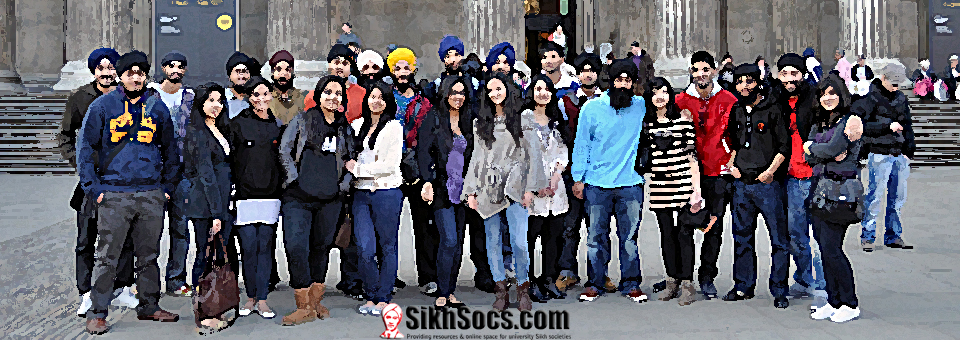Last week my name was mentioned in an article written for the ‘Public Spirit’ forum by an academic from the North of England, Dr Jasjit Singh. The article was part of a series looking briefly at whether faith groups who engage with the political process in the UK represent the people of that faith. It got me thinking about a new initiative we are launching this year to develop a small group of University students to become more productive and well-rounded Sikhs who enter the real World fully able to put into practise the teachings of Guru Nanak. Our aim is to guide the successful candidates who join The Club at SikhSocs.com to be equipped and confident in every facet of their life – business, personal and social. In essence, I would hope that they grow to be ambassadors of the Sikh way of life and true representatives of the House of Guru Nanak like the ones mentioned in Dr Singh’s article who are all leaders in their own right.
Dr Jasjit Singh has recently completed his doctoral studies at Leeds University looking partly at the dissemination of Sikhi to the young in the West. His article last week provided a concise history of how Sikh organisations in the UK have been politically active over the last hundred years right from the formation of the Khalsa Jatha of the British Isles in 1908 to the multifarious entities ‘representing’ today. This was an excellently written piece and provided a coherent narrative to how Sikhs as a collective have acted in their new home of the United Kingdom. I would do better describing it as how Sikhs have ‘reacted’ in their new home, for the article tells the story of a people who have risen each time that they feel challenged, but outside of those periods fail to cohesively build foundations from which to progress in the long-term. The conclusions that Dr Singh draws provide some explanation for why this might be:
“…identifying as a Sikh means representing oneself and the whole Sikh community at the same time, the opinion of any Sikh individual becomes as valid as any other. As the Gurus challenged those in power and encouraged their Sikhs to do so, any sort of hierarchy established within Sikh circles is by definition bound to be challenged at the earliest opportunity, most probably by Sikhs themselves.”
Sikhs exist without a system in which they are answerable to any one other person. Not only did Guru Nanak reject the caste system, class differences and gender inequality, but he destroyed the notion that any person had the right to act as a conduit between the individual and the Creator. We are leaderless in the modern understanding of the word, but this does not mean that the Sikh nation is meant to operate without foresight or in a vacuum of chaos; there is a system. And it is one that has served Sikhs well throughout history particularly in the 18th century when it was at the heart of the 2nd Sikh State that became the Confederacy of Misls in Punjab. Further exploration of that system is beyond the remit of my writing here, suffice to say that if every Sikh develops the characteristics of a leader and behaves accordingly, the Sikhs as a people might begin to find that they go beyond being mere reactionaries.
Dr Singh’s research work is gaining recognition widely and I’m pleased to be able to feature it this year as reference material in the 14-week Sikh Studies course that I teach at Universities. However, with the publication of his recent article I have also been moved to introduce elements that directly reflect the conclusions he draws into the work we do guiding and advising University Sikh societies more generally. We are days away from initiating the first members of The Club that I mentioned earlier and at the heart of what that group will be learning is that real leaders know that we are all capable of being leaders and moreover, such individuals will facilitate an atmosphere to encourage everybody to become a leader. They don’t need to wonder what kind of article will be written a hundred years from now about Sikh representation; they’re going to help write it.







